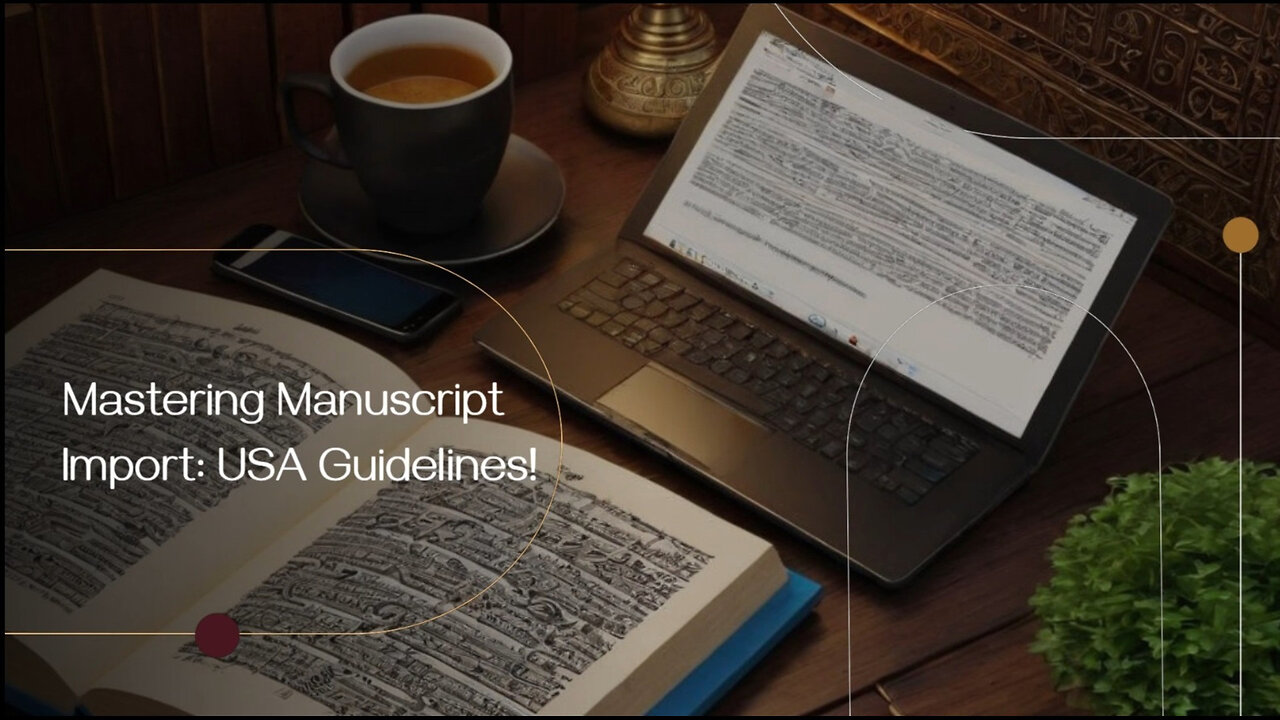Premium Only Content

Unraveling the Customs Maze: Importing Rare Manuscripts and Restoration Supplies
ISF Customs Broker
800-710-1559
isf@isfcustomsbroker.com
https://isfcustomsbroker.com
In today's video, we delved into the topic of importing rare manuscripts and historical documents, as well as restoration and preservation supplies for archivists, into the USA. We emphasized the importance of protecting and preserving our cultural heritage and the crucial role that archivists play in this process.
To successfully navigate the customs clearance process for these unique and delicate shipments, it is highly recommended to partner with a knowledgeable customs broker who specializes in handling such items. Customs brokers can assist in understanding and fulfilling the necessary customs requirements, ensuring a smooth clearance process.
One essential aspect of the customs clearance process is obtaining a customs bond, which acts as a financial guarantee between the importer, the customs broker, and the US Customs and Border Protection (CBP). This bond ensures the payment of all duties, taxes, and fees related to the importation.
Importing rare manuscripts and historical documents also requires the filing of an Importer Security Filing (ISF). This filing, submitted to CBP at least 24 hours before the goods are loaded onto the vessel bound for the USA, provides valuable information about the shipment, including the shipper, consignee, and contents.
Given the delicate nature of these items, it is crucial to consider their packaging and handling during the importation process. Suppliers of restoration and preservation supplies often offer specialized packaging materials, such as acid-free tissues and archival boxes, which help protect against damage during transit.
Upon arrival in the USA, the shipment must go through the customs clearance process. The customs broker will guide the importer through the necessary documentation, including the commercial invoice, packing list, and any permits or licenses required for importation.
Customs officers may take extra precautions when handling rare manuscripts and historical documents, so understanding and complying with the specific regulations for these items can help streamline the inspection process and reduce potential delays.
Once the shipment successfully clears customs, the imported rare manuscripts and restoration supplies can be utilized by archivists to restore, preserve, and conduct research on these invaluable pieces of history. By providing archivists with the necessary tools and supplies, we contribute to the ongoing preservation and understanding of our cultural heritage.
Thank you for joining us today as we explored the intricacies of importing rare manuscripts and historical documents, as well as restoration and preservation supplies. We hope you found this information valuable and informative. Make sure to subscribe to our channel to stay updated on our upcoming videos. Until next time, happy importing!
#usimportbond
#isfcustomsbroker
#uscustomsclearing
#isfentry
Video Disclaimer Here: This video is for educational purposes only and we are not affiliated with any US government agencies/companies/individual/etc.
00:23 - Importance of Customs Compliance: When importing rare manuscripts and historical documents into the USA, it's crucial to navigate customs regulations and processes to protect cultural heritage effectively.
00:41 - Role of Customs Brokers: Engaging a knowledgeable customs broker specializing in delicate shipments is recommended to ensure a smooth importation process, including understanding customs requirements and obtaining necessary customs bonds.
01:21 - Documentation and Security Filings: Importers must file an Importer Security Filing (ISF) with U.S. Customs and Border Protection at least 24 hours before loading shipments, along with preparing essential documents like commercial invoices and packing lists.
01:45 - Safe Packaging and Handling: Proper packaging using specialized materials is vital for the safe transport of rare manuscripts, and compliance with customs regulations can facilitate the inspection process, ultimately aiding archivists in preservation efforts.
-
 LIVE
LIVE
TonYGaMinG
4 hours ago🟢LIVE NOW! KINGDOM COME DELIVERANCE 2 / NEW EMOTES / BLERPS #RumbleGaming
722 watching -
 40:17
40:17
SLS - Street League Skateboarding
3 days agoEVERY 9 CLUB IN FLORIDA! Looking back at SLS Jacksonville 2021 & 2022 - Yuto, Jagger, Sora & more...
32.9K1 -
 LIVE
LIVE
PaddysParlorGames
13 hours agoSunday Parlor Chill: GOBSTEIN
1,938 watching -
 LIVE
LIVE
Major League Fishing
4 days agoLIVE! - Bass Pro Tour: Stage 2 - Day 4
807 watching -
 56:24
56:24
Russell Brand
1 day agoEddie Gallagher: War, Betrayal & Fighting the System
90.5K11 -
 11:21
11:21
TimcastIRL
5 hours agoGOP Rep Says TWO SHOOTERS In JFK Assassination As FBI Uncovers TROVE Of Secret Documents
94K130 -
 1:04:55
1:04:55
Bare Knuckle Fighting Championship
4 days agoBKFC ITALY PRESS CONFERENCE | LIVE!
37.3K3 -
 10:04
10:04
Space Ice
3 hours agoThe Movie Silent Hill Is Like Resident Evil Without The Good Parts - Worst Movie Ever
21.1K4 -
 5:49
5:49
Hannah Barron
1 day agoRedneck Euro Mount
18.3K20 -
 32:34
32:34
hickok45
8 hours agoSunday Shoot-a-Round # 268
13.9K12